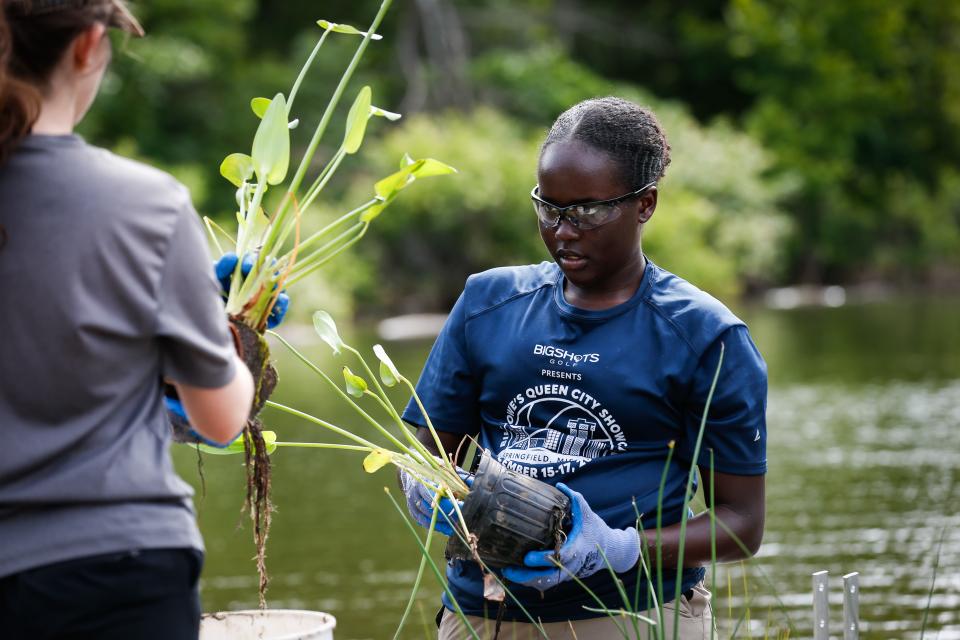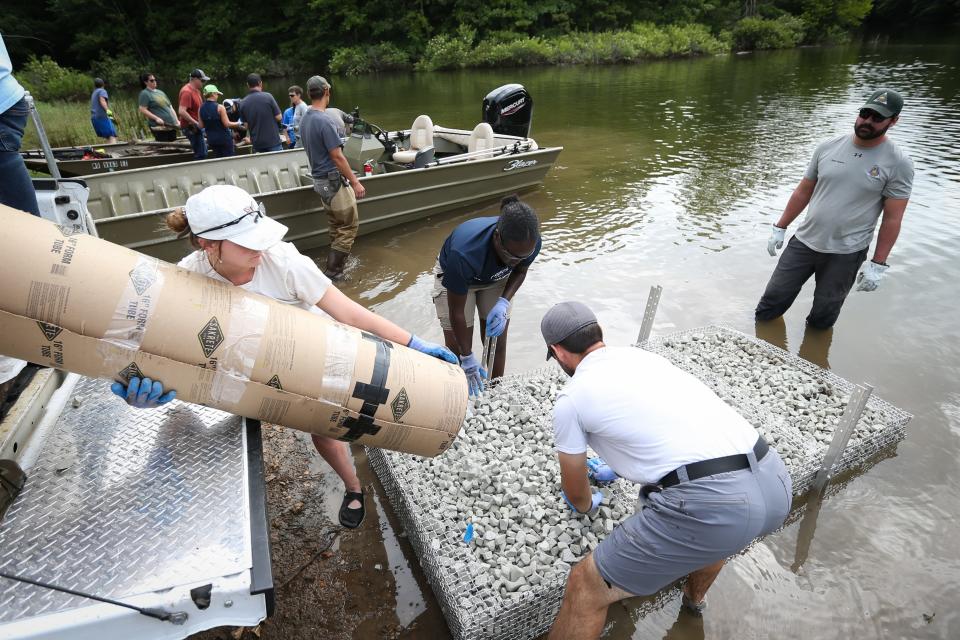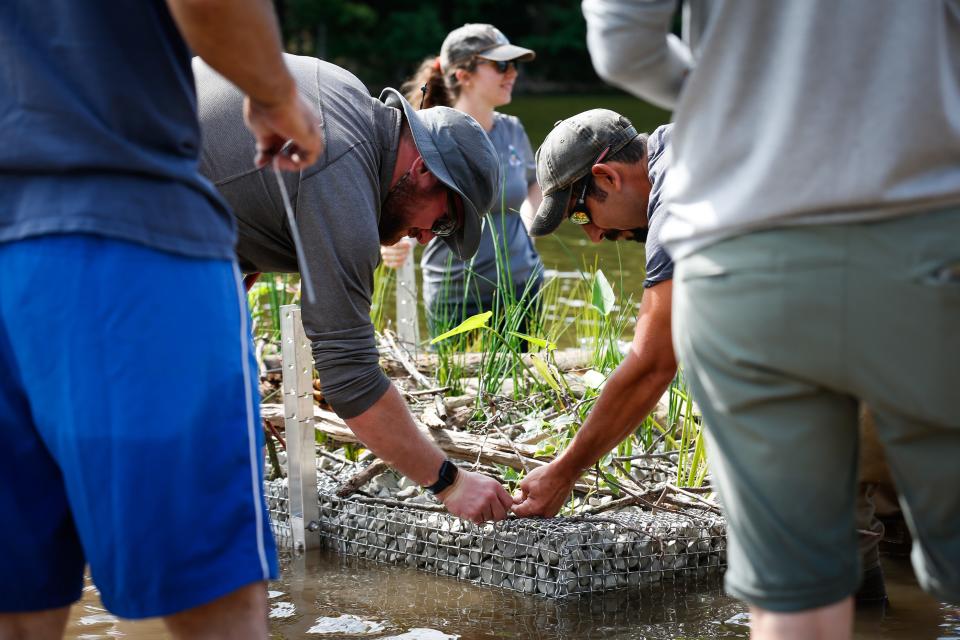An innovative new project has joined the fish, plants and other critters at Fellows Lake, where state and Springfield area partners hope to improve water quality and wildlife habitat.
The floating wetland, the first of its kind, set off from the north shore of the lake Monday morning and was pulled by a boat to the middle of a cove east of the marina, where it was anchored with a splash.
The project is part of a collaboration between the Missouri Department of Conservation, City Utilities and the Watershed Natives Program from the Watershed Committee of the Ozarks. And while this isn’t the first artificial wetland added to Springfield’s nature scene, it is the first to not include any plastic components in its structure.
The 8-by-12-foot wetland includes an aluminum cage for a base filled with roughly 640 pounds of recycled glass foam aggregate that look like larger pieces of gravel but weigh a tenth of what gravel would and are buoyant. The wetland houses native plantings, including pickerel weed, arrowhead, rushes, lizard’s tail, southern blue flag and swamp milkweed, on the 64-square-foot planting area.
What’s so special about the wetlands?
Earlier artificial wetlands can already be found both at Sequiota and Doling parks, though not in this new form, and provide various environmental benefits both above and below water. The wetlands filter sediments and contaminants from stormwater, take up excess agricultural nutrients, and create a habitat for aquatic organisms via roots and for insects and birds via blooms.
Frank Nelson, MDC’s wetland systems manager, said the reason Fellows Lake received the special wetland was because of its role as a priority watershed. With CU using Fellows Lake for drinking water, a non-plastic approach was an important factor in the project.
“Wetlands are often called the kidneys of the world,” he said of their role in filtering out contaminants.

With the presence of the wetlands at a more high-visibility area with nearby trails and east of the marina, Nelson said the hope is that private homeowners gain awareness of the technology as a “tangible way to improve water quality” and the practice spreads to more lakes and ponds.
But the goals of the wetlands are more than just the water quality. Nelson said Missouri has lost 90% of its wetlands.
“You don’t know what you’ve lost until it’s gone,” he said.
As the wetland is integrated into the lake, the hope is that the native plants incorporated into it propagate and expand to eventually bring lost native wetland species back into the ecosystem. Nelson said he is excited to see the wetland a year from now, the aluminum structure hopefully is entirely covered in green.
Designing the wetland
The design work of this new innovative wetland stretches back to January. During those initial months, Nelson said the team connected with a variety of entities that had brought their own innovation to wetlands design. By exploring options and developments in Boston, Baltimore, Chicago and at Clemson University, they eventually landed on a design from Germany that used the recycled glass foam aggregate.

While visitors may notice larger sticks and pieces of wood laying across the wetlands, that is by design. This “anti-goose technology” is a way to deter geese from picking the plants and should improve the plants’ longevity and chances of survival in the initial months.
Missouri Department of Natural Resources, James River Basin Partnership and Ozarks Technical Community College also contributed to the development and planning of the wetlands.
More: Here’s how Springfield agencies are handling new EPA regulations on ‘forever chemicals’
Nelson said initial maintenance will consist of monitoring the plants themselves and whether they have taken root, which may at first mean occasional watering. Similarly, they’ll be checking in on how much wildlife is attending to the wetlands and whether protections against critters are necessary to help plants establish themselves. The floating wetland includes cameras to allow for remote monitoring.
This Fellows Lake approach is actually cheaper per square foot than the “biohavens” found in Doling and Sequiota that contain recycled plastics. The wetland launched on Fellows Lake Monday cost $2,800, which Nelson said was covered through a cost-share between CU and MDC, with MDC covering 90% of the costs.

Future of wetlands in the Ozarks
With this being a pilot project, Nelson said depending on how the wetland does initially, there could be opportunities to scale up and build it out.
MDC plans to launch additional wetlands around the area later this summer. At McDaniel Lake, another important source of drinking water for CU, four wetlands will be launched before additional ones at Valley Water Mill. Nelson said the wetlands are being targeted for the upper watershed that could have the largest impact on water quality.
Marta Mieze covers local government at the News-Leader. Have feedback, tips or story ideas? Contact her at mmieze@news-leader.com.
This article originally appeared on Springfield News-Leader: Fellows Lake floating wetland aims to help repair wildlife habitat
Signup bonus from




